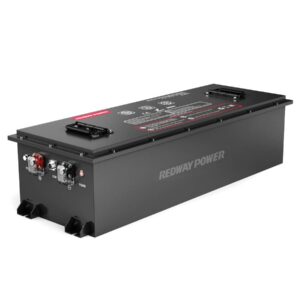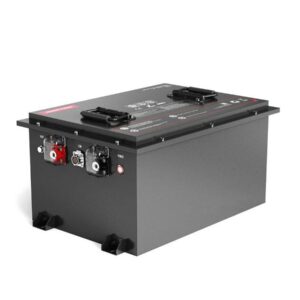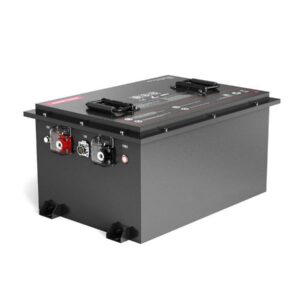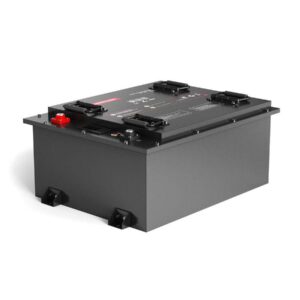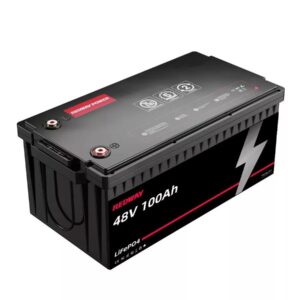Description
Our 48V 200Ah Lithium Iron Phosphate (LiFePO4) Battery is a premium energy solution engineered for OEM, ODM, and wholesale buyers. As a trusted lithium battery manufacturer, we deliver high-efficiency, eco-friendly power storage with 6,000+ cycles and robust safety features, ideal for solar systems, EVs, and industrial applications.
Key Features
High Energy Capacity: 51.2V/200Ah configuration provides 10,240Wh output for extended runtime in solar, EV, and backup power systems.
Long Cycle Life: 6,000+ cycles at 80% depth of discharge (DoD) ensure 3x longer service than lead – acid alternatives, minimizing replacement costs.
Advanced Safety Systems: Integrated BMS with overvoltage, overcurrent, and thermal protection guarantees stable operation in -20¡ãC to 60¡ãC environments.
Industrial – Grade Durability: IP65 – rated metal housing withstands dust, water, and mechanical stress for reliable outdoor performance.
Product Description
Designed for OEM and wholesale integration, our 48V 200Ah LiFePO4 Battery combines 100A continuous charging and 200A peak discharge capabilities with a low 3% monthly self – discharge rate. The modular architecture supports scalable energy storage, while customizable terminals, Bluetooth monitoring, and compact dimensions (specify size if available) enable seamless adaptation to diverse systems.
A 48V 200Ah lithium battery using LiFePO4 technology offers high-capacity, long-lasting energy storage with fast charging and enhanced safety. Ideal for solar energy systems, telecom, UPS, and industrial applications, this battery provides reliable, maintenance-free power with superior performance compared to traditional lead-acid batteries.
What are the technical specifications of a 48V 200Ah lithium battery?
This battery features a nominal voltage of 48V and a capacity of 200Ah, providing approximately 10 kWh of energy. It supports continuous discharge currents of 100-200A and peak discharge currents up to 250A. Typical dimensions are around 557 x 430 x 250 mm, with a weight between 80 and 95 kg. The battery uses prismatic LiFePO4 cells arranged in a 16S2P configuration and includes an intelligent Battery Management System (BMS).
How does a 48V 200Ah lithium battery improve energy storage compared to lead-acid?
Compared to lead-acid batteries, lithium batteries offer 5 to 10 times longer cycle life, significantly lighter weight, faster charging, and zero maintenance. They provide stable voltage output, higher efficiency, and better performance in extreme temperatures, resulting in lower total cost of ownership.
What are the common applications of a 48V 200Ah lithium battery?
This battery is widely used in solar energy storage, telecom backup, uninterruptible power supplies (UPS), electric vehicles, and industrial equipment requiring high-capacity, reliable power.
How long is the cycle life and expected lifespan of a 48V 200Ah lithium battery?
The battery typically offers over 6000 cycles at 80% depth of discharge, translating to 10 to 15 years of operational life depending on usage and maintenance.
What safety features and certifications ensure battery reliability?
Equipped with an advanced BMS, the battery protects against overcharge, overdischarge, overcurrent, short circuits, and thermal runaway. Certifications include UL, CE, RoHS, UN38.3, and IEC standards, ensuring compliance with international safety and environmental regulations.
How does the Battery Management System (BMS) protect and optimize battery performance?
The BMS continuously monitors voltage, current, temperature, and state of charge, balancing cell voltages and preventing unsafe conditions. It enables real-time monitoring and communication via Bluetooth or CAN bus, enhancing battery safety, longevity, and performance.
What are the physical size and weight considerations?
Typical dimensions are approximately 557 mm long, 430 mm wide, and 250 mm high, with weights between 80 and 95 kg. The compact and lightweight design facilitates installation in a variety of applications, improving system efficiency.
How does temperature influence the performance and lifespan of a 48V 200Ah lithium battery?
The battery operates effectively between -20°C and 60°C for discharge and 0°C to 55°C for charging. Extreme temperatures can reduce capacity and lifespan, so temperature-controlled charging and storage are recommended.
How do you select the right 48V 200Ah lithium battery for your needs?
Consider voltage and capacity requirements, discharge current needs, physical space, and environmental conditions. Consulting with LiFePO4-Battery-Factory ensures tailored solutions that optimize performance and compatibility.
What maintenance practices maximize lifespan and safety of the battery?
Maintenance is minimal: keep terminals clean, avoid deep discharge, store batteries in cool, dry environments, and use compatible chargers. Regular monitoring via BMS helps detect issues early, ensuring longevity and safety.
How does lithium battery chemistry enhance performance and reliability?
LiFePO4 chemistry provides superior thermal stability, longer cycle life, higher safety, and environmental friendliness compared to other lithium-ion chemistries. It delivers consistent voltage output and supports deep discharges without damage, making it ideal for demanding applications.
Battery Specification and Performance Chart
| Specification | Typical Value | Notes |
|---|---|---|
| Nominal Voltage | 48V | Standard for 48V LiFePO4 batteries |
| Capacity | 200Ah | High capacity for extended runtime |
| Energy | 10 kWh | Total stored energy |
| Continuous Discharge Current | 100-200A | Suitable for demanding applications |
| Peak Discharge Current | Up to 250A | For short bursts of power |
| Charge Voltage | 54.75V | CC/CV charging method |
| Dimensions (L x W x H) | 557 x 430 x 250 mm | Compact and durable |
| Weight | 80-95 kg | Lightweight compared to lead-acid |
| Cycle Life | >6000 cycles @ 80% DoD | Long lifespan with proper use |
Charging and Temperature Range Chart
| Parameter | Range | Notes |
|---|---|---|
| Operating Temperature | -20℃ to 60℃ | Wide range for diverse applications |
| Charging Temperature | 0℃ to 55℃ | Optimal for battery longevity |
| Charge Current | 100-200A | Ensures safe and efficient charging |
| Discharge Current | Continuous 100-200A | Supports various load demands |


